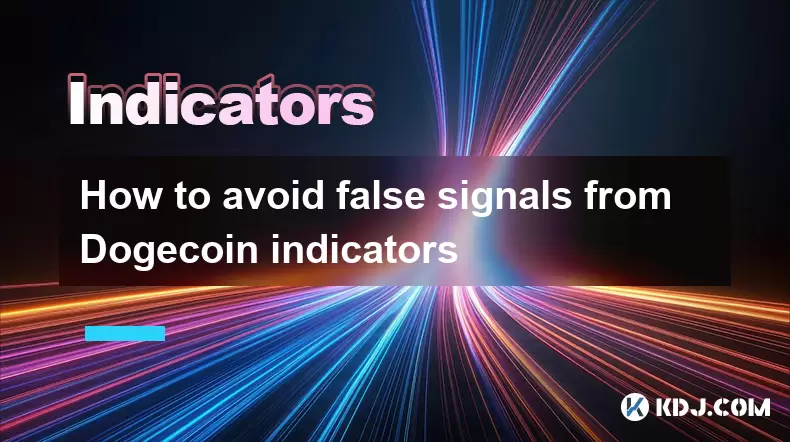-
 Bitcoin
Bitcoin $108,250.0992
0.11% -
 Ethereum
Ethereum $2,515.9404
0.03% -
 Tether USDt
Tether USDt $1.0003
0.00% -
 XRP
XRP $2.2166
-0.19% -
 BNB
BNB $656.5904
0.29% -
 Solana
Solana $147.4122
-0.58% -
 USDC
USDC $1.0000
-0.01% -
 TRON
TRON $0.2830
0.06% -
 Dogecoin
Dogecoin $0.1641
0.27% -
 Cardano
Cardano $0.5739
-0.19% -
 Hyperliquid
Hyperliquid $39.1463
-0.11% -
 Sui
Sui $2.8882
-0.02% -
 Bitcoin Cash
Bitcoin Cash $487.6428
0.31% -
 Chainlink
Chainlink $13.2097
0.07% -
 UNUS SED LEO
UNUS SED LEO $9.0308
0.10% -
 Avalanche
Avalanche $17.8608
0.13% -
 Stellar
Stellar $0.2379
-0.06% -
 Toncoin
Toncoin $2.7400
-0.39% -
 Shiba Inu
Shiba Inu $0.0...01144
-0.36% -
 Litecoin
Litecoin $87.5467
0.66% -
 Hedera
Hedera $0.1538
0.22% -
 Monero
Monero $315.5479
0.36% -
 Dai
Dai $1.0000
0.00% -
 Polkadot
Polkadot $3.3523
-0.71% -
 Ethena USDe
Ethena USDe $1.0003
0.01% -
 Bitget Token
Bitget Token $4.3960
-1.03% -
 Uniswap
Uniswap $7.2663
4.19% -
 Aave
Aave $272.8619
2.04% -
 Pepe
Pepe $0.0...09676
-0.18% -
 Pi
Pi $0.4586
-2.87%
Is the daily moving average adhesion + the 30-minute MACD golden cross suitable for swing trading?
The daily moving average adhesion combined with the 30-minute MACD golden cross offers a powerful strategy for identifying high-probability swing trade entries in crypto markets.
Jul 06, 2025 at 09:07 am

Understanding the Daily Moving Average Adhesion Strategy
In swing trading, identifying trends and reversals is critical. The daily moving average adhesion refers to a situation where the price remains close to or "sticks" to a key moving average line over several candlesticks. This phenomenon often signals strong support or resistance levels depending on the direction of the trend.
The most commonly used moving averages for this strategy are the 50-day, 100-day, and 200-day Simple Moving Averages (SMA). When the price consistently adheres to one of these lines without breaking through significantly, it suggests that institutional traders may be using these levels as reference points.
Traders monitor this behavior because it can indicate potential breakout or continuation opportunities. For instance, if the price pulls back to the 50-day SMA and bounces off it multiple times, it could signal a strong uptrend in progress.
The Role of the 30-Minute MACD Golden Cross
The MACD (Moving Average Convergence Divergence) indicator is a popular tool among technical analysts due to its ability to show momentum shifts. A golden cross occurs when the MACD line crosses above the signal line, typically indicating a bullish shift in momentum.
Using the 30-minute timeframe allows traders to zoom into shorter-term movements while still aligning with the broader trend identified on the daily chart. This approach helps filter out noise present in lower timeframes like the 5-minute or 15-minute charts.
When a trader combines the MACD golden cross on the 30-minute chart with the daily moving average adhesion, they’re essentially aligning two different timeframes — one for trend validation and another for precise entry timing.
This dual confirmation can increase the probability of successful trades by ensuring both the trend and momentum are favorable.
How to Identify a Valid Signal
To apply this strategy effectively, traders must first identify when the price is adhering to a major daily moving average. This can be done by plotting the chosen SMA (e.g., 50-day) on the daily chart and observing how the price reacts around it.
Next, switch to the 30-minute chart and look for the MACD indicator. Wait until the MACD line crosses above the signal line, forming the golden cross. It’s crucial that this crossover happens after a period of bearish momentum, such as during a pullback or consolidation phase.
Also, check the volume accompanying the MACD cross. An increase in volume can serve as additional confirmation that institutional players are entering the market.
Avoid taking trades if the MACD cross occurs during a sideways market or if the price has already moved significantly away from the moving average. These situations may result in false signals or late entries.
Entry and Exit Points
Once the daily moving average adhesion and the 30-minute MACD golden cross align, the next step is determining the optimal entry point.
A conservative approach would be to wait for the candle to close above the MACD cross level before entering a long position. This prevents premature entries based on wicks or fakeouts.
Place a stop-loss order below the recent swing low near the moving average. This ensures risk is contained while allowing room for normal price fluctuations.
For take-profit levels, consider using Fibonacci extensions or previous resistance zones. Alternatively, trail your stop using a moving average like the 20-period EMA on the 30-minute chart to capture extended moves.
Do not ignore the risk-to-reward ratio; aim for at least a 1:2 ratio before entering any trade. Adjust your position size accordingly to manage exposure.
Backtesting the Strategy
Before applying this strategy live, conduct thorough backtesting across various crypto assets such as BTC, ETH, and altcoins with sufficient historical data.
Use platforms like TradingView or Python-based libraries like Backtrader to simulate past performance. Focus on markets where the moving average adhesion was strong, and the MACD golden cross occurred within a reasonable distance from that average.
Record metrics such as:
- Win rate
- Average gain/loss per trade
- Maximum drawdown
- Time in trade
Adjust parameters like the length of the moving average or MACD settings to optimize performance. However, avoid overfitting to past data.
Keep in mind that no strategy works 100% of the time. There will be periods of underperformance, especially during high volatility or black swan events common in crypto markets.
Risk Management Considerations
Even with a robust strategy, risk management remains essential. Limit each trade to a small percentage of your total portfolio — typically between 1% and 3%.
Use position sizing calculators to determine how many coins or contracts to buy based on your stop-loss placement.
Avoid doubling down after losses or increasing position sizes following wins. Stick to your predefined rules regardless of emotions or external news.
Monitor macroeconomic factors like Federal Reserve announcements, exchange outages, or regulatory updates, which can impact crypto prices irrespective of technical indicators.
Frequently Asked Questions
Q: Can I use other timeframes instead of the 30-minute MACD?
Yes, you can experiment with other intraday timeframes like 15-minute or 1-hour charts. However, the 30-minute offers a balance between responsiveness and reliability for swing trading purposes.
Q: What if the MACD golden cross happens but the price doesn’t follow through?
This is a common occurrence known as a false signal or fakeout. Always wait for confirmation through candlestick closes and volume spikes before committing capital.
Q: Is this strategy suitable for all cryptocurrencies?
While applicable to most liquid cryptos, less traded or low-cap altcoins may produce unreliable signals due to low volume and erratic price action. Stick to majors like BTC, ETH, SOL, etc., for better results.
Q: Should I combine this strategy with other indicators?
Adding complementary tools like RSI or Bollinger Bands may enhance filtering. However, avoid overloading your chart with too many indicators, as this can lead to analysis paralysis.
Disclaimer:info@kdj.com
The information provided is not trading advice. kdj.com does not assume any responsibility for any investments made based on the information provided in this article. Cryptocurrencies are highly volatile and it is highly recommended that you invest with caution after thorough research!
If you believe that the content used on this website infringes your copyright, please contact us immediately (info@kdj.com) and we will delete it promptly.
- Litecoin Breakout Watch: What Traders Need to Know Now
- 2025-07-06 16:50:13
- Bitcoin, Solana, Ethereum: Decoding the Latest Buzz on the Blockchain
- 2025-07-06 16:50:13
- Widnes Resident's 50p Could Be Your Ticket to Easy Street: Rare Coin Mania!
- 2025-07-06 16:55:13
- Bitcoin, Solaris Presale, and Token Rewards: What's the Buzz?
- 2025-07-06 16:55:13
- Grass Seeds, Garden Experts, and a £1 Coin Hack: Your Guide to a Perfect Lawn
- 2025-07-06 14:30:13
- Cracking the Code to a Perfect Lawn: Grass Seeds, Expert Tips, and the £1 Coin Hack!
- 2025-07-06 14:50:13
Related knowledge

How to spot manipulation on the Dogecoin chart
Jul 06,2025 at 12:35pm
Understanding the Basics of Chart ManipulationChart manipulation in the cryptocurrency space, particularly with Dogecoin, refers to artificial price movements caused by coordinated trading activities rather than genuine market demand. These manipulations are often executed by large holders (commonly known as whales) or organized groups aiming to mislead...

What is the significance of a Dogecoin engulfing candle pattern
Jul 06,2025 at 06:36am
Understanding the Engulfing Candle Pattern in CryptocurrencyThe engulfing candle pattern is a significant technical analysis tool used by traders to identify potential trend reversals in financial markets, including cryptocurrencies like Dogecoin. This pattern typically consists of two candles: the first one is relatively small and indicates the current...

Dogecoin monthly chart analysis for long term investors
Jul 06,2025 at 10:08am
Understanding the Dogecoin Monthly ChartFor long-term investors, analyzing the monthly chart of Dogecoin (DOGE) provides a macro view of its price behavior over extended periods. The monthly chart captures major trends, key resistance and support levels, and potential reversal zones that are crucial for strategic investment planning. Unlike daily or hou...

How to manage risk using ATR on Dogecoin
Jul 06,2025 at 02:35am
Understanding ATR in Cryptocurrency TradingThe Average True Range (ATR) is a technical indicator used to measure market volatility. Originally developed for commodities, it has found widespread use in cryptocurrency trading due to the high volatility inherent in digital assets like Dogecoin (DOGE). The ATR calculates the average range of price movement ...

Setting up a Dogecoin trading strategy in Pinescript
Jul 06,2025 at 05:00pm
Understanding Dogecoin and Its Place in the Cryptocurrency MarketDogecoin (DOGE) is a decentralized, peer-to-peer cryptocurrency that was initially created as a joke but has since gained significant traction in the crypto market. Despite its humorous origins, Dogecoin has been adopted by a large community and supported by notable figures such as Elon Mu...

How to avoid false signals from Dogecoin indicators
Jul 06,2025 at 06:49am
Understanding Dogecoin Indicators and Their LimitationsDogecoin indicators are tools used by traders to analyze price movements and make informed decisions. These include moving averages, Relative Strength Index (RSI), MACD, and volume-based metrics. However, these tools can sometimes generate false signals, especially in highly volatile markets like Do...

How to spot manipulation on the Dogecoin chart
Jul 06,2025 at 12:35pm
Understanding the Basics of Chart ManipulationChart manipulation in the cryptocurrency space, particularly with Dogecoin, refers to artificial price movements caused by coordinated trading activities rather than genuine market demand. These manipulations are often executed by large holders (commonly known as whales) or organized groups aiming to mislead...

What is the significance of a Dogecoin engulfing candle pattern
Jul 06,2025 at 06:36am
Understanding the Engulfing Candle Pattern in CryptocurrencyThe engulfing candle pattern is a significant technical analysis tool used by traders to identify potential trend reversals in financial markets, including cryptocurrencies like Dogecoin. This pattern typically consists of two candles: the first one is relatively small and indicates the current...

Dogecoin monthly chart analysis for long term investors
Jul 06,2025 at 10:08am
Understanding the Dogecoin Monthly ChartFor long-term investors, analyzing the monthly chart of Dogecoin (DOGE) provides a macro view of its price behavior over extended periods. The monthly chart captures major trends, key resistance and support levels, and potential reversal zones that are crucial for strategic investment planning. Unlike daily or hou...

How to manage risk using ATR on Dogecoin
Jul 06,2025 at 02:35am
Understanding ATR in Cryptocurrency TradingThe Average True Range (ATR) is a technical indicator used to measure market volatility. Originally developed for commodities, it has found widespread use in cryptocurrency trading due to the high volatility inherent in digital assets like Dogecoin (DOGE). The ATR calculates the average range of price movement ...

Setting up a Dogecoin trading strategy in Pinescript
Jul 06,2025 at 05:00pm
Understanding Dogecoin and Its Place in the Cryptocurrency MarketDogecoin (DOGE) is a decentralized, peer-to-peer cryptocurrency that was initially created as a joke but has since gained significant traction in the crypto market. Despite its humorous origins, Dogecoin has been adopted by a large community and supported by notable figures such as Elon Mu...

How to avoid false signals from Dogecoin indicators
Jul 06,2025 at 06:49am
Understanding Dogecoin Indicators and Their LimitationsDogecoin indicators are tools used by traders to analyze price movements and make informed decisions. These include moving averages, Relative Strength Index (RSI), MACD, and volume-based metrics. However, these tools can sometimes generate false signals, especially in highly volatile markets like Do...
See all articles

























































































